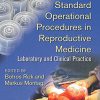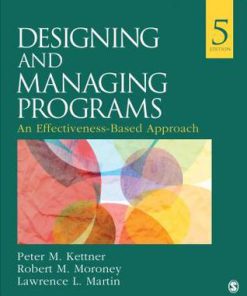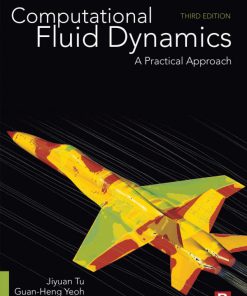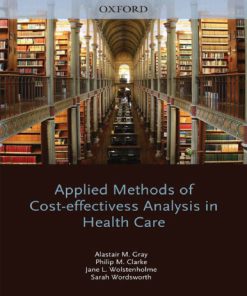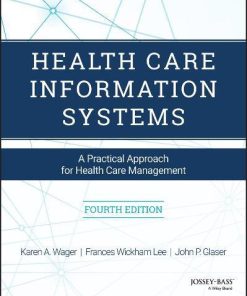Cost Effectiveness Analysis in Health A Practical Approach 3rd Edition by Peter Muennig 1119011279 9781119011279
$50.00 Original price was: $50.00.$25.00Current price is: $25.00.
Cost Effectiveness Analysis in Health A Practical Approach 3rd Edition by Peter Muennig – Ebook PDF Instant Download/DeliveryISBN: 1119011279, 9781119011279
Full download Cost Effectiveness Analysis in Health A Practical Approach 3rd Edition after payment.
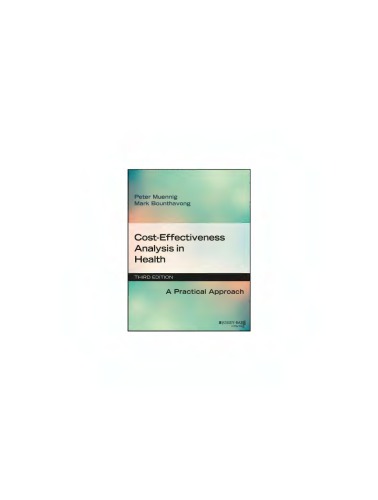
Product details:
ISBN-10 : 1119011279
ISBN-13 : 9781119011279
Author: Peter Muennig
The field’s bestselling reference, updated with the latest tools, data, and techniques Cost-Effectiveness Analysis in Health is a practical introduction to the tools, methods, and procedures used worldwide to perform cost-effective research. Covering every aspect of a complete cost-effectiveness analysis, this book shows you how to find which data you need, where to find it, how to analyze it, and how to prepare a high-quality report for publication. Designed for the classroom or the individual learner, the material is presented in simple and accessible language for those who lack a biostatistics or epidemiology background, and each chapter includes real-world examples and “tips and tricks” that highlight key information. Exercises throughout allow you to test your understanding with practical application, and the companion website features downloadable data sets for students, as well as lecture slides and a test bank for instructors. This new third edition contains new discussion on meta-analysis and advanced modeling techniques, a long worked example using visual modeling software TreeAge Pro, and updated recommendations from the U.S. Public Health Service’s Panel on Cost-Effectiveness in Health and Medicine. Cost-effectiveness analysis is used to evaluate medical interventions worldwide, in both developed and developing countries. This book provides process-specific instruction in a concise, structured format to give you a robust working knowledge of common methods and techniques. Develop a thoroughly fleshed-out research project Work accurately with costs, probabilities, and models Calculate life expectancy and quality-adjusted life years Prepare your study and your data for publication Comprehensive analysis skills are essential for students seeking careers in public health, medicine, biomedical research, health economics, health policy, and more. Cost-Effectiveness Analysis in Health walks you through the process from a real-world perspective to help you build a skillset that’s immediately applicable in the field.
Cost Effectiveness Analysis in Health A Practical Approach 3rd Table of contents:
Chapter 1 Introduction to Cost‐Effectiveness
Overview
Why Cost‐Effectiveness Is Useful
Elements of Cost‐Effectiveness Analysis
Health Interventions
The Competing Alternative
Health States
Health Status
The Quality‐Adjusted Life‐Year
Costs
The Average and Incremental Cost‐Effectiveness Ratio
Why Conduct Cost‐Effectiveness Analysis?
Costs Matter
Effectiveness Versus Efficacy
The Reference Case Analysis
Cost‐Effectiveness Analysis and Policy
Prioritizing Health Interventions
Do Cost‐Effectiveness Analyses Actually Change the Way Things Are Done?
What Does the Future Hold?
Summary
Further Readings
References
Chapter 2 Principles of Cost‐Effectiveness Analysis
Overview
The Perspective of a Cost‐Effectiveness Analysis
Capturing Costs
Capturing Quality
Interpreting the Cost‐Effectiveness Ratio
Defining the Comparator
Interpreting Incremental Changes in Cost and Effectiveness
Types of Economic Analysis
Cost‐Effectiveness and Cost‐Utility Analysis
When to Use Nonreference Case Cost‐Effectiveness Analyses
Other Measures
Cost‐Benefit Analysis
Cost‐Minimization Analysis
Burden‐of‐Disease Analysis
Summary
Further Readings
References
Chapter 3 Developing a Research Project
Overview
Eight Steps to a Perfect Research Project
Developing a Research Question
Anatomy of a Research Question
Defining the Population
Defining the Interventions Under Study
Defining the Disease You Are Studying
Research Checklist
Have I Included All of the Important Alternatives?
Where Will the Intervention Take Place?
Are Different Levels of Treatment or Different Screening Intervals Relevant?
What Type of Study Is Appropriate?
For Whom Will I Conduct the Study?
How Far into the Future Do I Need to Capture Outcomes?
What Do I Include, and What Do I Ignore?
Are There Enough Data to Answer My Question?
Review
Designing Your Analysis
Summary
Further Readings
References
Chapter 4 Working with Costs
Overview
Opportunity Costs
Identifying Costs
Micro‐Costing and Gross Costing
Getting Cost Data
Using Diagnosis Codes
Adjusting Costs
Hospital Charges
Converting Other Charges
Adjusting for Inflation
Discounting Future Costs
When to Use Discounting
How to Use Discounting
Costs Associated with Pain and Suffering
Assessing the “Relevancy” of Cost Data
Other Cost Considerations
Measuring Changes in Costs
When to Use Micro‐Costing
Friction Costs and Transfer Payments
Savings Associated with Premature Death
Summary
Further Readings
References
Chapter 5 Probabilities and Decision Analysis Models
Overview
The Idea Behind Decision Analysis
Probabilities
Some Basic Rules of Probability
Applying the Rules
Decision Analysis Models
Calculating the Probability of Each Strategy
Calculating the Cost of Each Strategy
Putting It All Together
Rollback Method (Thinking Inside the Tree)
Types of Decision Analysis Models
Summary
Further Reading
References
Chapter 6 Calculating Life Expectancy
Overview
Hand‐Calculating Years Gained
Calculating Life‐Years Lost Using Markov Models
Principles of Markov Modeling
Markov Models in Practice
Summary
Further Readings
References
Chapter 7 Working with Health‐Related Quality‐of‐Life Measures
Overview
Framework
Preference Scores
Who Should Valuate HRQL?
Deriving HRQL Scores
Using Preference‐Weighted Generic Instruments
Generating HRQL for Acute Conditions
HRQL Scores Generated from Other Health Surveys
Other Considerations and Reminders
Effect of Age on HRQL
Effect of Disease Stage on HRQL
Effect of an Intervention on HRQL
Use of HRQL Scores in Diverse Populations
Disease‐Specific HRQL Instruments
Fees Associated with HRQL Instruments
Using Disability‐Adjusted Life‐Years
Summary
Further Readings
References
Chapter 8 Calculating QALYs
Overview
Using the Summation Method
Using the Life Table Method
Quality‐Adjusted Life Expectancy
Using Markov Models to Calculate QALE
More On Discounting
Issues with QALYs
Calculating Incremental Cost‐Effectiveness
Disability‐Adjusted Life‐Year (DALY)
Summary
Further Readings
References
Chapter 9 Conducting a Sensitivity Analysis
Overview
Performing a Sensitivity Analysis
Sensitivity Analysis
One‐Way Sensitivity Analysis
Using One‐Way Sensitivity Analyses to Validate a Model
Answering Secondary Questions Using One‐Way Sensitivity Analyses
Two‐Way Sensitivity Analysis
Tornado Diagram
Multiway Sensitivity Analysis
First‐Order Monte Carlo Simulation
Second‐Order Monte Carlo Simulation
Picking Distributions
Determining the Plausible Range of Each Variable
Presenting the Results of the Probabilistic Sensitivity Analysis
Summary
Further Readings
References
Chapter 10 Preparing Your Study for Publication
Overview
Content and Structure of Cost‐Effectiveness Articles
Title and Abstract
Introduction
Methods
Results
Discussion
Other
Technical Appendix
Figures and Illustrations
Summary
Further Reading
References
Chapter 11 Basic Concepts in Epidemiology and Application to Cost‐Effectiveness Analysis
Overview
Review of Incidence
Crude, Category‐Specific, and Adjusted Rates
Prevalence Versus Incidence
Relationship Between Risks and Rates
Understanding Error
Managing Error in Cost‐Effectiveness Analysis
Frequency Distributions and Random Error
Basics of Statistical Inference
Calculating Weighted Means
Evaluating Study Limitations
Review of Medical Study Designs
Cross‐Sectional Studies
Retrospective Studies
Prospective Studies
Randomized Controlled Trials
Meta‐Analysis
Primary Cost‐Effectiveness Studies
Generalizability
Other Ways of Identifying Error in the Medical Literature
Summary
Further Readings
References
Chapter 12 Finding the Data You Need
Overview
Finding Data in the Medical Literature
Grading Published Data
Using Electronic Datasets
Finding the Right Electronic Data
Which Source of Data Do You Turn to?
Data Extraction Tools
Using Printed Tabulations of Electronic Data
Using Datasets Themselves
Understanding Error in Electronic Data
Using Unpublished Data
Using Data from Piggybacked Studies
Using Expert Opinion
Organizing Your Data
Summary
Further Readings
References
Chapter 13 A Worked Example
Overview
Helping Students Learn
Laboratory Exercise One: Building a Markov Tree
Laboratory Exercise Two: Comparing Interventions
Laboratory Exercise Three: The Cost‐Effectiveness of Health Insurance
Laboratory Exercise Four: Sensitivity Analysis
People also search for Cost Effectiveness Analysis in Health A Practical Approach 3rd:
applied methods of cost effectiveness analysis in health care
introduction to cost effectiveness analysis in health
the role of cost effectiveness analysis in health and medicine
applied methods of cost effectiveness analysis in health care pdf
cost effectiveness analysis in healthcare
Tags: Cost Effectiveness, Analysis, Practical Approach, Peter Muennig
You may also like…
Politics & Philosophy - Social Sciences
Designing and Managing Programs An Effectiveness Based Approach Peter M. Kettner
Medicine
Ethics In Health Administration A Practical Approach For Decision Makers Eileen E. Morrison
Biology and other natural sciences - Microbiology
Cosmetic Microbiology: A Practical Approach 3rd Edition Philip A. Geis
Mathematics
Understanding Regression Analysis A Conditional Distribution Approach 1st Edition Peter H. Westfall
Business & Economics - Econometrics
Medicine - Cardiology


